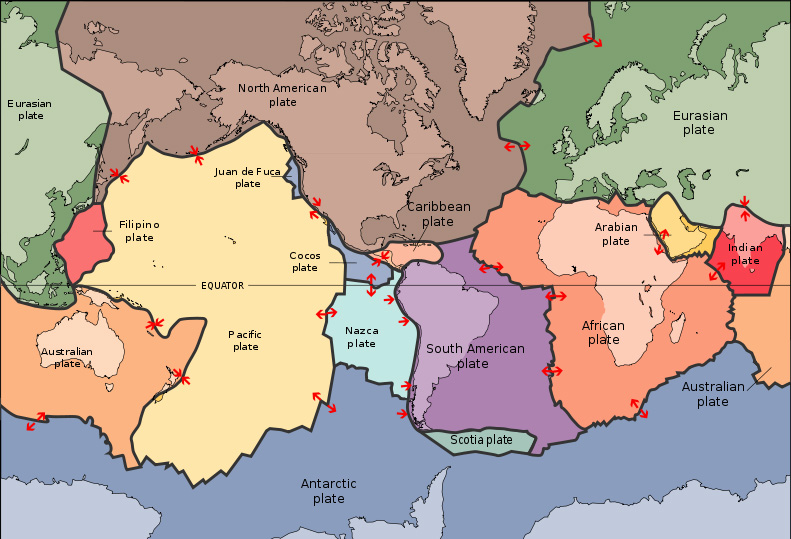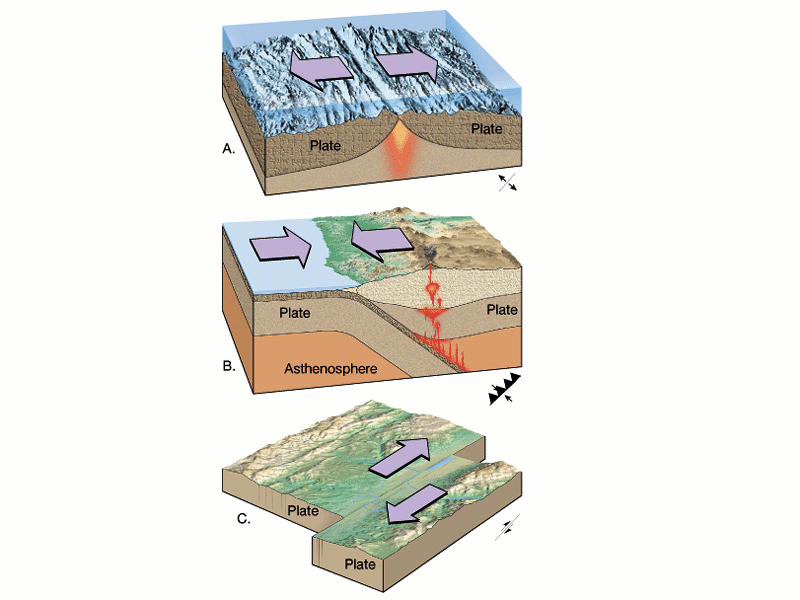| Home | Physics | Chemistry | Earth Science | Biology |
Plate Tectonics
The theory of plate tectonics originated in the 1960s. It describes how many moving, crustal plates cover Earth’s surface. Seafloor spreading showed that Earth’s crust moves sideways. Scientists wanted to understand the motion of all Earth’s plates.
Plates are made of a rigid layer of uppermost mantle and a layer of either oceanic or continental crust above. Some plates are made only of oceanic crust. Others are made of part oceanic and part continental crust. There are 7 major plates and many minor ones. The seven major plates are:
African plate
Antarctic plate
Eurasian plate
Indo-Australian plate
North American plate
Pacific plate
South American plate
Some of the minor plates are:
Arabian plate
Caribbean plate
Philippine plate
Scotia plate
Nazca plate

Plate Motions
There are three main kinds of plate motions. At their boundaries, plates can move apart (divergent boundaries), move together (convergent boundaries), or slide past each other (transform boundaries).

A) Divergent boundaries are places where plates are pulling apart. You learned that magma is pushed up through faults in a rift valley at a mid-ocean ridge system. The magma spreads, cools and hardens to form new oceanic crust at this divergent boundary.
B) Convergent boundaries are areas where plates collide. Several things can happen at these boundaries depending on the types of plates that collide.
C) Transform boundaries are areas where two plates slide by each other. No new lithosphere is created. No old lithosphere is being destroyed, or recycled. The main result of transform boundaries is horizontal plate movement.